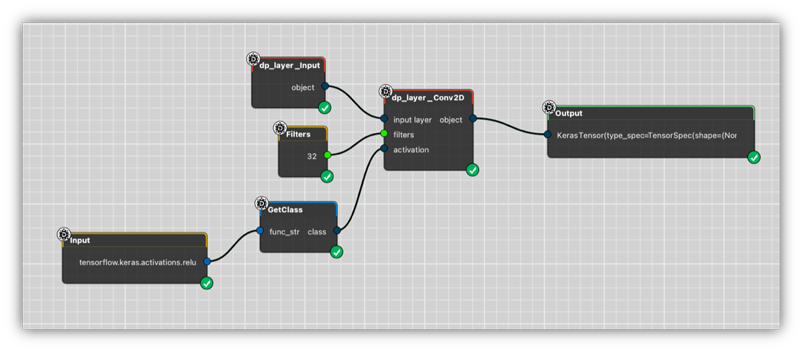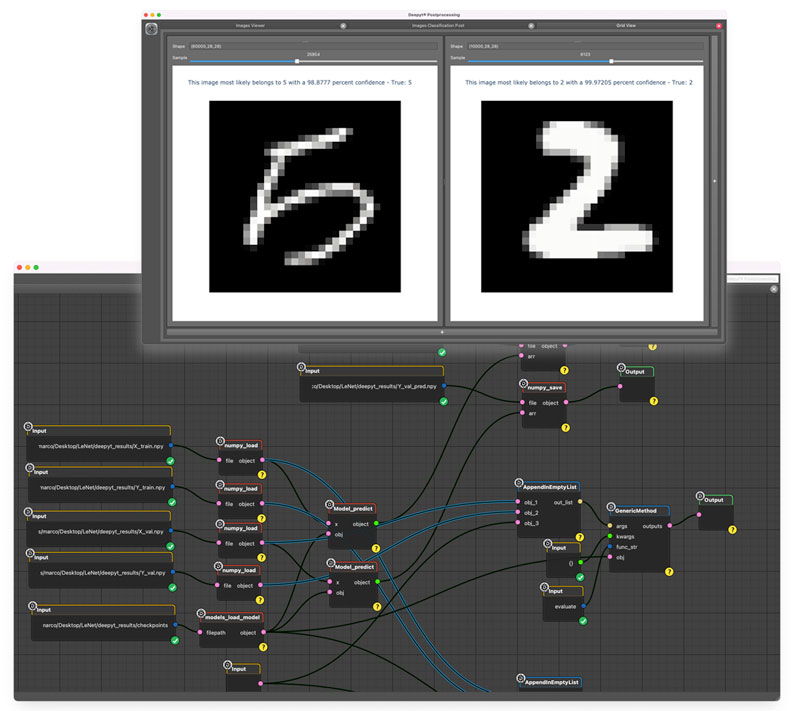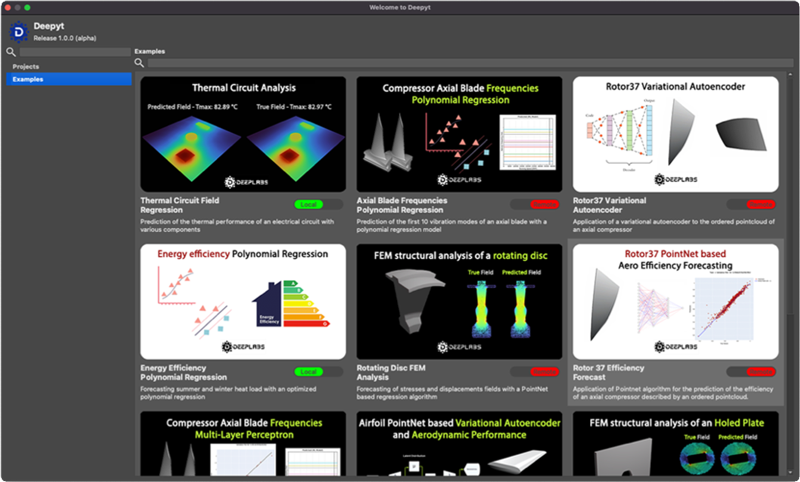Deepyt for data science
Deepyt is a Python-based software for artificial intelligence and industrial applications.
Through Deepyt you can write Python code using acyclic graphs (DAG). Using either the interface or the DeepytCore python library, graphs are created and executed.
Deepyt Features
1. Deepyt
Each graph has a structure based on nodes and edges, typical of dataflow programming. Nodes fall into three categories: graphs, operations, and placeholders. Thanks to this structure, previously created graphs can be used in a new one. Operations are basic elements that cannot be represented through a graph. Placeholders are inputs and outputs and can represent any type of Python data.
When developing Python code or working on artificial intelligence projects, it is necessary to re-develop parts of the same pipeline several times. In fact, we must deal with problems that have already been addressed or re-develop non-parametric code developed in the past. Deepyt solves this kind of problem because each graph can be used in new projects easily. At the same time, multiple graphs can be concatenated in a versatile manner, creating complex chains.
- A growing gallery of modules and examples
- Dashboard builder
- A set of python packages wrapped in a graphical version
- Different types of execution
- Easy handling of Jupyter Servers


Deepyt can be used for various applications
- Artificial Intelligence / Machine Learning / Deep Learning
- Data analysis
- Data Visualization
- Python Based pipelines with a no-code approach
- Industrial and Engineering applications
2. Basic node
Deeplabs provides several ready-to-use open-source libraries wrapped in graphical versions (Numpy, Tensorflow, PyTorch…), with a potentially growing catalogue. Each of these packages can be easily located via the node’s library. The abundance of pre-implemented graphs within the software makes it possible to greatly speed up development time (data loading, neural network generation, etc.).
Some tasks are known to be more convenient to realize through code. To this end, the software allows full integration with your Python code, which can be used at any stage. In Deepyt is possible to write this type of operation in a specific node (CustomOperation). Through such a node, Python code can be written through a dedicated interface.
Deeplabs provides several ready-to-use open-source libraries wrapped in graphical versions (Numpy, Tensorflow, PyTorch…), with a potentially growing catalogue. Each of these packages can be easily located via the node’s library. The abundance of pre-implemented graphs within the software makes it possible to greatly speed up development time (data loading, neural network generation, etc.).
Some tasks are known to be more convenient to realize through code. To this end, the software allows full integration with your Python code, which can be used at any stage. In Deepyt is possible to write this type of operation in a specific node (CustomOperation). Through such a node, Python code can be written through a dedicated interface.
Combining the libraries provided by Deeplabs with your own graphs will result in an ever-growing library of pre-implemented graphs. In this way, you will always have reliable, ready-to-use working blocks.
Libraries can be downloaded or uninstalled at any time, all that is needed is an Internet connection and a valid license.
3. Types of execution
Deepyt offers different types of graph executions designed for different uses:
- Execution on a parallel thread
- Execution on a parallel process
- Execution on a remote host via the ssh protocol.
Since three types of simulation are possible in Deepyt, there is a dedicated interface for managing the different processes.
4. Examples
DeePyt provides several examples already implemented and ready to use. Each example presents a possible application of the software. Examples can be divided into three categories: Artificial Intelligence, CAE (Computer Aided Engineering).
You can use the examples as a starting point for the development of new projects. Deeplabs aim to make this library as extensive and varied as possible by trying to cover different case studies.

5. Modular Dashboards and Postprocessing
DeePyt offers a dedicated interface for the visualization and analysis of any type of data.
A dynamic dashboard can be quickly built by linking several tools together. Through this interface, various pre-implemented data representation techniques can be exploited, with the possibility of customizing graphs and combining modules to create new pipelines. If you are familiar with Matplotlib or Plotly, you will find these tools a convenient alternative for data visualization. Each tool runs as stand-alone software based on Qt, which makes it possible to cover a wide range of applications.
6. Jupyter
Through Deepyt, several Jupiter servers can be run and managed. Each notebook runs on an already configured python environment. This working environment has pre-installed the most common python libraries and the core version of Deepyt. Through the DeepytCore library, nodes created through the graphical interface can be executed.
